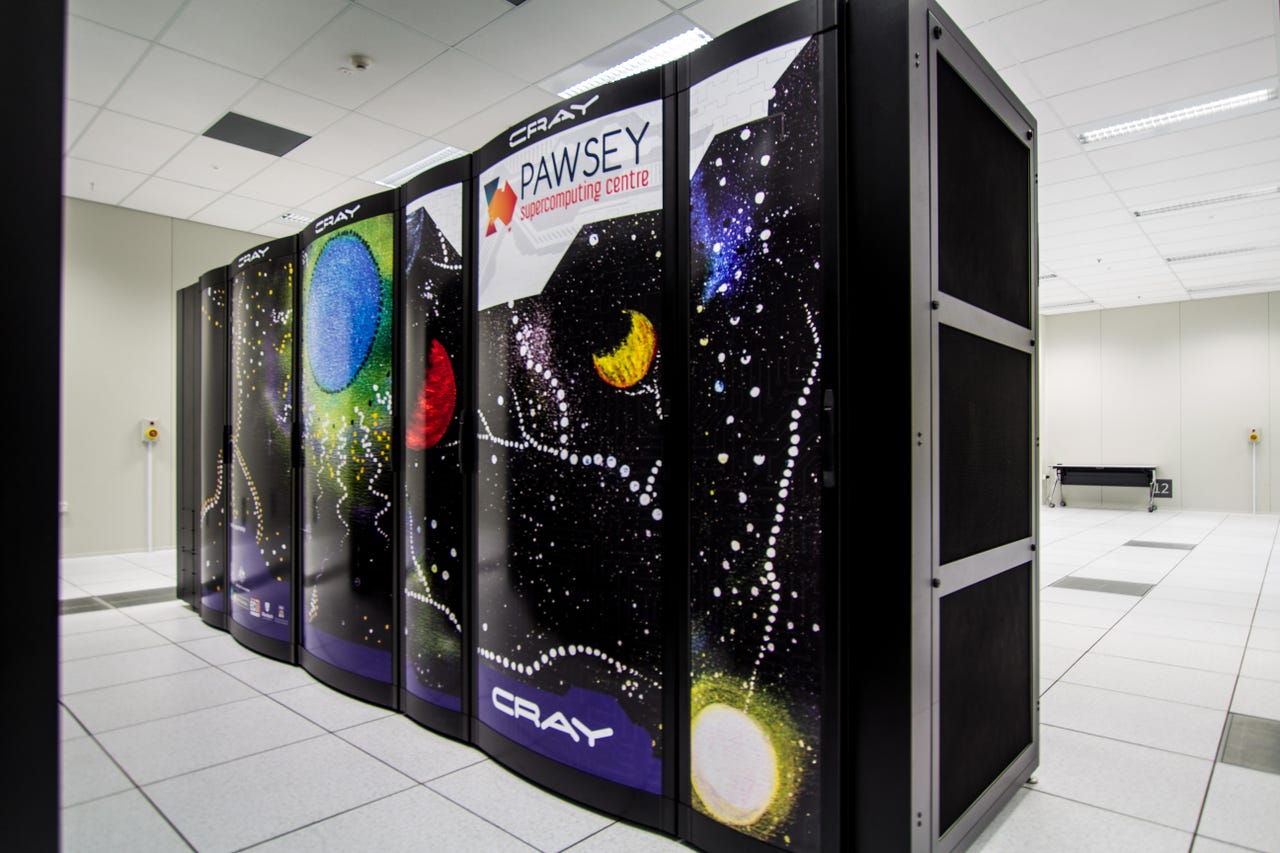Pawsey to get new super supercomputing cluster


Galaxy
The Pawsey Supercomputing Centre in Western Australia is undergoing a capital refresh, with the Commonwealth Scientific and Industrial Research Organisation (CSIRO) looking for a vendor to help it consolidate its existing systems.
Pawsey currently hosts two supercomputers: Magnus, a Cray XC40 supercomputer, which uses a massively parallel architecture consisting of 1,488 individual nodes that are connected by a high-speed network; and Galaxy, a Cray XC30 supercomputer, which is currently being used as a dedicated system for the radio astronomy community.
Magnus was commissioned in 2014 and the Galaxy in 2013. It is expected the new single general-purpose supercomputer will boast the capability to handle the workloads of both systems.
The Pawsey centre is an unincorporated joint venture between CSIRO, Curtin University, Edith Cowan University, Murdoch University, and the University of Western Australia.
It currently serves over 1,500 researchers across Australia that are involved in more than 150 supercomputing projects. Nine Australian Research Centres of Excellence also benefit from the Pawsey centre.
The Galaxy cluster supports Australia's two Square Kilometre Array (SKA) precursor instruments, as well as the Australian Square Kilometre Array Pathfinder (ASKAP) and the Murchison Widefield Array (MWA) radio telescopes, both located at CSIRO's Murchison Radio-astronomy Observatory in remote Western Australia.
The $1 billion SKA is slated as the largest and most capable radio telescope ever constructed.
See also: Square Kilometre Array supercomputer design completed
Magnus
As of September 2016, Magnus was the most powerful public research supercomputer in the southern hemisphere. Magnus is supported by a smaller commodity cluster, Zeus, for pre/post-processing and visualisation, and Zythos, which is a partition within the Zeus cluster.
Pawsey in April last year announced receiving AU$70 million in funding from the federal government to upgrade its facilities. The funding will be used for the new system.
In a request for tender (RFT), CSIRO said Pawsey is responding to the transition of scientific discovery workflows from compute-centric to data-centric and the shift from "data-from-science" to "science-from-data".
While the past five years have seen Pawsey focus on support for supercomputer simulations in traditional fields, CSIRO said the provision of data storage and access to advanced visualisation capabilities would in the next five years see increased emphasis on machine learning, support for complex workflows, interactive high-performance computing and integration with visualisation capabilities, the use of container technologies, HPC-focused data management, sharing, integrity and security, and service diversification into new domains, including bioinformatics, in addition to continuing its existing scope.
"Anticipating that the paradigm of 'Systems of Insight' will be the dominant approach in computer-assisted, data-intensive research, Pawsey's future environment seeks to align with such changes in further accelerating the achievement of science outcomes that are of benefit to Australia -- with this procurement providing the essential infrastructure foundation for such advances during 2020-22," CSIRO wrote.
See also: Photos: The world's 25 fastest supercomputers (TechRepublic)
The new heterogeneous system must comprise of: x86-64 architecture CPU nodes, each configured with identical memory; a specified number of high-memory x86-64 CPU nodes; and GPU nodes.
It must also be capable of enabling increasingly heterogeneous, future workloads that require constant movement of data between memory layers, and be configured with filesystems that support both large and small file I/O.
It is expected the new system will be ready by 23 September 2020.
In addition to Magnus and Galaxy, the Pawsey Supercomputing Centre also houses Athena, which was provided by Hewlett Packard Enterprise-owned SGI in March 2017.
Athena replaced the decommissioned Fornax cluster.
MORE SUPERCOMPUTERS IN AUSTRALIA
- NCI boasts Australia's fastest supercomputer with AU$70m Gadi system
- UQ's new supercomputer is pushing the limits in analysing human skull models
- University of Sydney unveils AU$2.3m Artemis 3 AI research supercomputer
- Defence awards AU$57m supercomputer contract to Hansen Yuncken
- Garvan Institute gets new supercomputer for genomic research
- Australia's NCI gets supercomputing systems from IBM for AI and analytics
- HPE's SGI scores AU$1.5m CSIRO supercomputing contract
- It takes two to Tango: eRSA partners with Dell EMC for new research supercomputer
- Swinburne reaches for the sky with AU$4m astronomical supercomputer